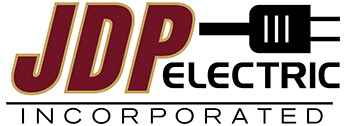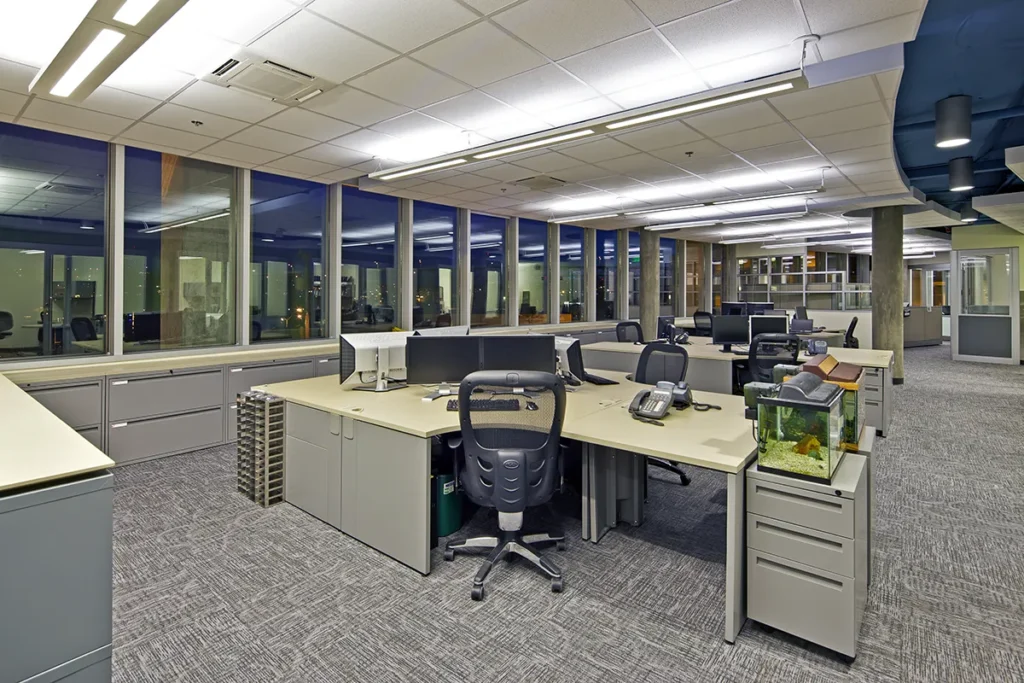Finding ways to make your business energy-efficient will lower your energy bills and contribute to lower overhead costs, starting with the electric bill. The lighting in businesses can account for 10- to 25% of the bill, but sometimes it can be as high as 50% for others! This percentage can depend on how much lighting you have and what lighting you use. By understanding how your current lighting system may contribute to higher electricity bills, you can make changes that will provide business cost savings.
Upgrade Lighting for Energy Efficiency
Lighting is essential whether your business operates in a commercial office or retail space. In a commercial office, you may use lighting for 10 to 12 hours daily. Retail spaces may have them on during operating hours and continue to keep them on overnight for security reasons. If you have an old lighting system, this can cost a lot of money in the long run because of its inefficiency.
For example, if you have a fluorescent lighting system, the costs of replacement tubes may be lower, and this type of lighting may be more efficient than incandescent lighting. However, you’ll be able to sustain business cost savings in the long run with an upgrade.
Types of Common Lighting
The different kinds of lighting impact short-term and long-term costs, depending on their unit price and energy efficiency. Some lighting systems may require low-cost replacement bulbs or tubes, but they may last only a short time or could be more efficient. Let’s look at the different types of lighting and how they may contribute to your bottom line.
Incandescent Bulbs
These bulbs are probably the lowest cost per unit out of all the other lighting systems, but they have an annual operating cost of about $7.00 per bulb. In addition, you’ll have to change these bulbs out every year because they have a rated bulb life of 1,000 hours.
Fluorescent Lighting
This type of lighting system is more common in businesses because they are considerably more energy-efficient and cost-effective than incandescent. It is 75% more efficient than incandescent, and the annual operating cost of the operation of one bulb or tube is about $2.00. In addition, you won’t have to change these as often because the rated bulb life is approximately 10,000 hours.
However, during the operation of this lighting system, you may notice that they can fade or dim over time and sometimes have pink, green or off-colored glows. In addition, the lighting can be harsh and cause eye strain when subjected to it for long periods.
Pros and Features of LED Lighting
These are the most efficient forms of lighting, 83% more efficient than incandescent bulbs and 8% more efficient than fluorescent lighting. Its annual operating cost is about $1.00 per bulb. This low annual operating cost gives you significant savings on your energy bill even when lights are always on. In addition, if you need more lighting in a space, you can add it without a remarkable rise in energy usage.
Another advantage of LED lighting is that the rated LED bulb life is 25,000 hours or about 34 years. The bulb’s long life helps reduce the maintenance costs of replacing bulbs and are especially great to use in hard-to-reach places.
Make Use of Daylight
Using the natural light from windows or skylights can gain even more significant cost savings for your business. You won’t need to purchase, use, or maintain as many light fixtures or bulbs, saving more money in the long run.
If you are looking for ways to help cut costs on your business’s electric bill, the local experts at JDP can help answer any questions you may have.

